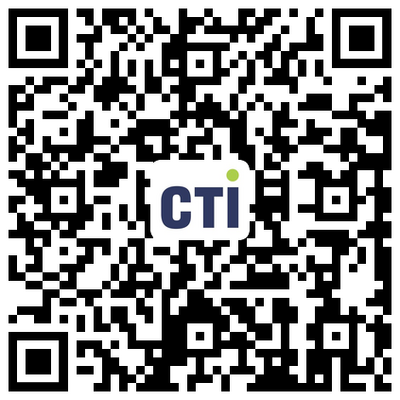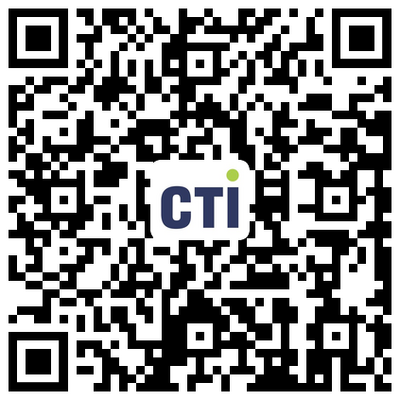- Home
- About CTI
- Our Services
- Investor Relations
- CTI Mall
- Resource Center
- Reports Validation
- Join Us
-
 Overview
Overview
Centre Testing International Group Co., Ltd. (CTI) is a market leader in testing, inspection, certification, calibration, audit, training & technical services; building trust between governments, enterprises, and consumers.
-
 Sustainability
SustainabilitySustainability is deeply rooted in CTI’s business model, by delivering science-based solutions and verification services, to increase transparency and traceability throughout the global value chain. CTI is a proponent of carbon neutrality and sustainable development.
-
 Our service
Our serviceCentre Testing International Co., Ltd. (CTI) is the pioneer and leader in the TIC Industry which provides one-stop solutions on testing, inspection, certification, calibration, audit, training & technical services.
-
By Industry
Our service capabilties cover the upstream and downstream of the supply chain including textile and apparel,toys,electronic appliances,medical health,food...andother industries.
-
 Environment
Environment
-
 Raw Material & Fuel Chemicals
Raw Material & Fuel Chemicals
-
 Textiles, Apparel, Footwear & Accessories
Textiles, Apparel, Footwear & Accessories
-
 Food & Agricultural Products
Food & Agricultural Products
-
 Cosmetics, Personal Care & Household Chemicals
Cosmetics, Personal Care & Household Chemicals
-
 Building Materials&Construction Engineering
Building Materials&Construction Engineering
-
 Electronic & Electrical Appliances
Electronic & Electrical Appliances
-
 Toys, Furniture & Home Decoration
Toys, Furniture & Home Decoration
-
 Industrial Equipment & Manufacturing
Industrial Equipment & Manufacturing
-
 Rail & Aviation
Rail & Aviation
-
 Automotive & Spare Parts
Automotive & Spare Parts
-
 Pharma and Medical Services
Pharma and Medical Services
-
 Maritime Vessel Compliance Testing
Maritime Vessel Compliance Testing
 By Industry
By IndustryOur service capabilties cover the upstream and downstream of the supply chain including textile and apparel,toys,electronic appliances,medical health,food...andother industries.
-
-
 Specialty
SpecialtyComprehensively guarantee quality and safety, promote compliance and innovation, demonstrate brand competitiveness, and achieve higher quality, healthier, safer, and greener sustainable development.
-
 Management
ManagementWe have established a clear governance structure in accordance with listing requirements and national regulations and policies to deal with internal and external challenges and achieve sustainable development.
-
 Information DisclosureWe are committed to establishing normal and effective two-way communication with shareholders and investors. We have established a complete information disclosure mechanism to convey information to shareholders in a timely manner.
Information DisclosureWe are committed to establishing normal and effective two-way communication with shareholders and investors. We have established a complete information disclosure mechanism to convey information to shareholders in a timely manner.
-
 Talents Policy
Talents PolicyEnsuring the basic rights and benefits of employees;
Providing professional skills training to promote employees’ growth;
Carrying out various kinds of activities to balance employees’ work and life.
-
 RecruitmentWelcome to join CTI family! We are providing a platform for you to show your talents and achieve your career aspiration.
RecruitmentWelcome to join CTI family! We are providing a platform for you to show your talents and achieve your career aspiration.
- Resource Center
- Application Forms
- Bulletin
- Training Center
- CTI Academy
- Reports Validation

EU published directive to amend exemption list of ELV
On 19 May 2016, the Official Journal of the European Union officially published Directive (EU) 2016/774 to amend exemption list of Annex II to Directive 2000/53/EC (ELV). This revision refers to item as follows: Exemptions 8(e), 8(f), 8(g), 8(h), 8(j) and 10 (d). This Directive shall enter into force on the twentieth day following that of its publication in the Official Journal of the European Union. Member States shall adopt and publish, within six months of its publication in the Official Journal of the European Union at the latest, the laws, regulations and administrative provisions necessary to comply with this Directive.
Requirements of Regulations
Annex II to Directive 2000/53/EC lists vehicle materials and components exempted from the prohibition set out in Article 4(2)(a) thereof. Exemptions 8(e), 8(f), 8(g), 8(h), 8(j) and 10 (d) of Annex II shall be reviewed in 2014. An assessment of technical and scientific progress has demonstrated that the use of lead in the applications covered by exemptions 8(h), 8(j) and 10(d) should not be prolonged because the use of lead in these applications has become avoidable. The assessment of technical and scientific progress has also demonstrated that the use of lead in the applications covered by exemptions 8(e), 8(f) and 8(g) remains unavoidable as substitutes have not become available yet. However, since information exists on possible future lead substitutes in these applications, it is appropriate to introduce a review date allowing to establish if the use of lead in these applications can be discontinued. These exemptions shall be reviewed in 2019.
|
Item |
Exemption |
Scope and expiry date of the exemption/ Review date |
|
8(e) |
Lead in high melting temperature type solders (i.e. lead-based alloys containing 85 % by weight or more lead) |
This exemption shall be reviewed in 2019 |
|
8(f) (a) |
Lead in compliant pin connector systems |
Vehicles type-approved before 1 January 2017 and spare parts for these vehicles |
|
8(f) (b) |
Lead in compliant pin connector systems other than the mating area of vehicle harness connectors |
This exemption shall be reviewed in 2019 |
|
8(g) |
Lead in solders to complete a viable electrical connection between semiconductor die and carrier within integrated circuit flip chip packages |
This exemption shall be reviewed in 2019 |
|
8(h) |
Lead in solder to attach heat spreaders to the heat sink in power semiconductor assemblies with a chip size of at least 1 cm2 of projection area and a nominal current density of at least 1 A/mm2 of silicon chip area |
Vehicles type-approved before 1 January 2016 and spare parts for these vehicles |
|
8(j) |
Lead in solders for soldering of laminated glazing |
Vehicles type-approved before 1 January 2020 and spare parts for these vehicles |
|
10(d) |
Lead in the dielectric ceramic materials of capacitors |
Related recommendations
Media Inquiries
- 400-6788-333
- mkd@yilussjy.com
- About CTI
- Our Services
- Investor Relations
- CTI Mall
-
Resource Center
- Application Forms
- Bulletin
- Training Center
- CTI Academy
- Reports Validation
-
Join Us
- Talents Policy
- Recruitment




















 粤公网安备 44030602000441号
粤公网安备 44030602000441号 